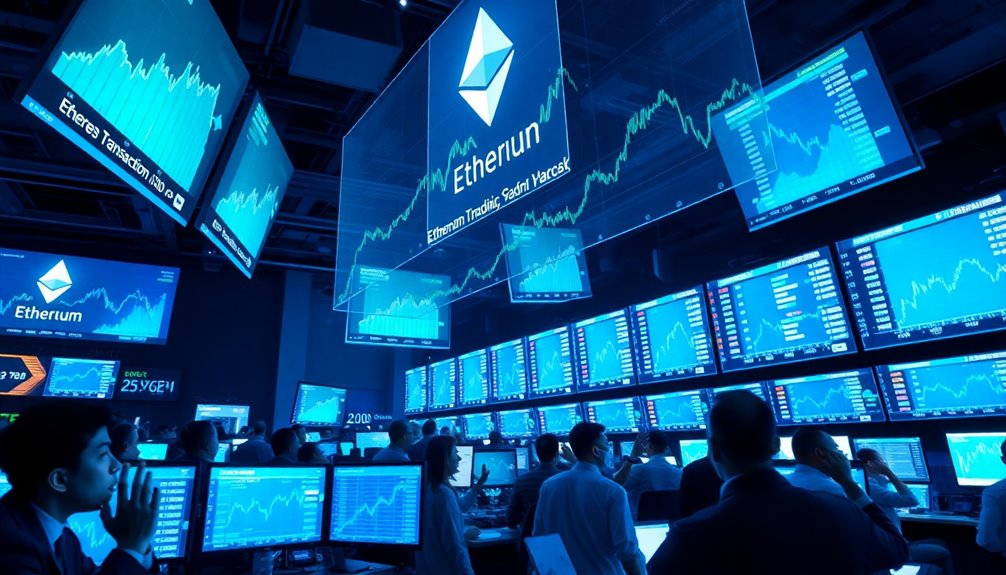You might have noticed that Ethereum’s transaction activity recently hit its highest point in over a year, coinciding with increased regulatory attention. As more investors and developers engage with the network, questions arise about how ongoing SEC discussions could influence this momentum. With the landscape shifting rapidly, understanding what’s driving this surge and what it means for Ethereum’s future becomes increasingly important. The full story behind this trend is worth exploring.

Amid rising regulatory buzz surrounding the SEC, Ethereum’s network activity has hit a yearly high, signaling a surge in on-chain engagement. On August 5, 2025, daily transactions on the Ethereum network soared to approximately 1.7 million, the highest in over a year. By that day, transactions reached 1.878 million, showing a steady upward trend from just 1.516 million transactions on August 3.
Ethereum network hits yearly high with nearly 1.9 million daily transactions amid rising regulatory attention
This spike indicates that Ethereum is experiencing a significant increase in real usage, moving beyond speculative trading to more authentic, utility-driven activity. You can see this reflected in the growing number of active and new addresses, which are rising alongside transaction volumes. More active addresses mean more users are engaging with the network, while new addresses suggest fresh participants are continuously entering the ecosystem. Active addresses continue to grow, indicating sustained user engagement. This reflects a growing commitment to practicing kindness within the community through supportive and collaborative interactions.
This growth in address activity supports the idea of sustained demand, not just short-term market gaming, and indicates broader adoption of Ethereum’s decentralized applications and services.
The impact of the EIP-1559 upgrade becomes even clearer during this period. The upgrade introduced a deflationary mechanic by burning a portion of transaction fees, which accelerates with the increased transaction volume. As more transactions occur, more ETH gets burned, reducing the circulating supply.
This mechanism is fueling bullish sentiment among investors, as scarcity becomes a key driver of value. When you consider the combined effect of higher transaction volumes and ETH burns, it’s clear that Ethereum’s supply dynamics are shifting in a way that supports long-term value growth.
Institutional interest is also on the rise, with ETF net inflows reaching around $73.3 million on August 5. Most notably, BlackRock’s ETHA ETF brought in $88.8 million, illustrating strong confidence from large investors. Other ETFs, like CETH and ETHV, reported positive inflows, further reinforcing institutional participation.
While some outflows from Grayscale’s ETHE and ETH suggest mixed sentiment, the overall picture remains optimistic. These inflows contribute to increased volatility and trading activity, creating opportunities for traders and investors alike.
Meanwhile, Ethereum’s DeFi sector and Layer-2 solutions play a crucial role in this surge. Increased transaction activity in DeFi applications and the adoption of Layer-2 scaling solutions make transactions more efficient and affordable.
This improved infrastructure encourages more users to transact and participate in decentralized finance and other network services, further boosting transaction volume. As these sectors continue to grow, Ethereum’s network throughput and overall value are likely to strengthen, supporting sustained on-chain activity despite external regulatory concerns.









